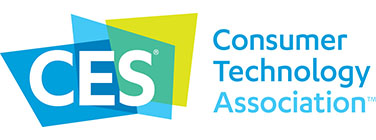CES to Break Records, Showcase Key Tech Trends for 2016
January 4, 2016
CES 2016 will be the largest in the organization’s 49-year history, says chief economist Shawn DuBravac. With 2.4 million square feet of exhibit space — equal to 50 football fields — the show is expected to welcome 150,000 attendees, including 45,000 international visitors from 150 countries. DuBravac reported that the name of CES producer the Consumer Electronics Association has changed to the Consumer Technology Association, to better reflect its current mix of members including Uber, Lyft, Snapchat and Airbnb.
Trends to look for in 2016, says DuBravac, are ambient sensing, aggregated learning and maturation of nascent ecosystems.
“We’re moving into this next era, the second digital decade after we have this large install base of digital products,” he said. “The conversation has shifted from what’s technologically possible to what’s meaningful, use cases that show how technology changes your life.”
He noted that, although smartphones, tablets, laptops, desktops and TVs currently represent 51 percent of CE purchases, “as we enter into 2017, these categories will represent less than half,” with burgeoning nascent categories helping to maintain growth.
Ambient sensing refers to the integration of sensors into everyday products. Although currently many of those devices represent the fitness and health categories, they will expand, especially as sensors have evolved to measure and monitor in continuous time.
“We’ll start to see sensors deployed in non traditional ways,” he said. “Sensors are driving us into entirely new environments. We still live in a completely analog world, surrounded by digital devices but we’ll be moving into increasingly digital environments.”
Aggregated learning, or what he also calls “predictive customization,” enables an algorithm to take in a wide array of information to provide a more robust recommendation.
“With aggregated learning, the service is able to make recommendations that deviate from history due to sensor data,” he explained. “We’re constantly measuring the environment and recording that information so we can notice the absence and presence of things.” Google’s fleet of autonomous cars, for example, has driven 1.6M kilometers, and all the information learned is shared across all the vehicles, for collective learning.
DuBravac also sees a maturation of nascent ecosystems; virtual reality, for example, will have a strong showing at CES, with over 100 companies in this space. UltraHD/4K is also a growth area; Warner Bros. just announced it will release 35 4K Blu-ray movies this year. Wearables, which were valued at just under $5B last year, will “continue to build out,” with “a more holistic approach.” Other strong areas include drones, 3D printers and smart homes.


No Comments Yet
You can be the first to comment!
Sorry, comments for this entry are closed at this time.